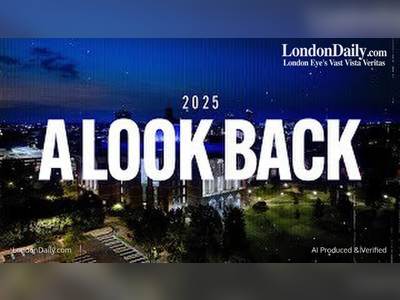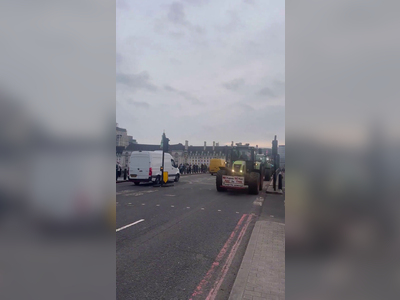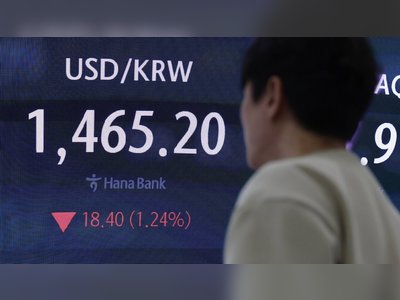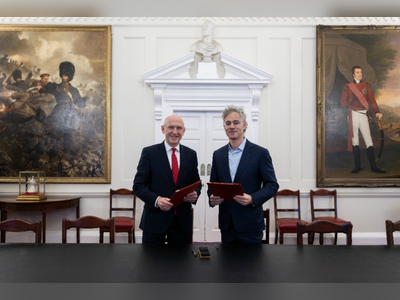Governor Newsom Waives Environmental Rules to Expedite Wildfire Recovery
California suspends select environmental regulations to accelerate rebuilding efforts for wildfire victims while maintaining safety and resilience standards.
In the wake of devastating wildfires that have destroyed over 12,000 structures and claimed at least 24 lives in Los Angeles County, California Governor Gavin Newsom has issued an executive order to expedite recovery efforts.
The directive temporarily waives specific environmental review and permitting requirements under the California Environmental Quality Act (CEQA) and the California Coastal Act.
This move is aimed at helping residents rebuild quickly and affordably.
Governor Newsom outlined the reasoning behind the order during an appearance in Altadena, California, saying, 'We want you to return, rebuild, and rebuild to better, modern standards.
We also want to ensure that the costs are not disproportionate, especially for middle-class communities.'
The executive order enables a streamlined permitting process by suspending certain regulations that traditionally require lengthy reviews.
This decision reflects the urgency of the crisis and is intended to eliminate bureaucratic delays that could impede the reconstruction of homes and businesses.
Additionally, the order directs state agencies to identify other permitting barriers that could be eased to further accelerate rebuilding efforts.
This strategy ensures that the recovery process remains both efficient and accessible for affected residents.
Governor Newsom emphasized that California remains committed to environmental leadership, stating, 'California leads the nation in environmental management.
I have no intention of compromising that, but one thing I won't tolerate is unnecessary delay.'
This isn't the first time Governor Newsom has invoked emergency measures to address wildfire recovery.
In 2019, he declared a state of emergency to expedite forest management by waiving similar environmental regulations, allowing fire officials to clear hazardous vegetation and dead trees more efficiently.
The executive order also extends anti-price-gouging protections for essential building materials and supplies for another year, aiming to prevent predatory practices that could hinder rebuilding efforts.
While the order aims to fast-track recovery, it raises questions about the balance between immediate needs and long-term environmental impact.
Critics argue that bypassing environmental regulations could set a precedent that undermines the state's rigorous standards.
Proponents, however, highlight the necessity of prioritizing rapid recovery for communities devastated by wildfires.
As firefighting crews continue to contain the blazes, the state’s focus is shifting toward recovery.
The executive order is expected to provide much-needed relief for thousands of displaced residents, helping them rebuild their homes and lives in the aftermath of one of the most destructive wildfire seasons in California’s history.
The directive temporarily waives specific environmental review and permitting requirements under the California Environmental Quality Act (CEQA) and the California Coastal Act.
This move is aimed at helping residents rebuild quickly and affordably.
Governor Newsom outlined the reasoning behind the order during an appearance in Altadena, California, saying, 'We want you to return, rebuild, and rebuild to better, modern standards.
We also want to ensure that the costs are not disproportionate, especially for middle-class communities.'
The executive order enables a streamlined permitting process by suspending certain regulations that traditionally require lengthy reviews.
This decision reflects the urgency of the crisis and is intended to eliminate bureaucratic delays that could impede the reconstruction of homes and businesses.
Additionally, the order directs state agencies to identify other permitting barriers that could be eased to further accelerate rebuilding efforts.
This strategy ensures that the recovery process remains both efficient and accessible for affected residents.
Governor Newsom emphasized that California remains committed to environmental leadership, stating, 'California leads the nation in environmental management.
I have no intention of compromising that, but one thing I won't tolerate is unnecessary delay.'
This isn't the first time Governor Newsom has invoked emergency measures to address wildfire recovery.
In 2019, he declared a state of emergency to expedite forest management by waiving similar environmental regulations, allowing fire officials to clear hazardous vegetation and dead trees more efficiently.
The executive order also extends anti-price-gouging protections for essential building materials and supplies for another year, aiming to prevent predatory practices that could hinder rebuilding efforts.
While the order aims to fast-track recovery, it raises questions about the balance between immediate needs and long-term environmental impact.
Critics argue that bypassing environmental regulations could set a precedent that undermines the state's rigorous standards.
Proponents, however, highlight the necessity of prioritizing rapid recovery for communities devastated by wildfires.
As firefighting crews continue to contain the blazes, the state’s focus is shifting toward recovery.
The executive order is expected to provide much-needed relief for thousands of displaced residents, helping them rebuild their homes and lives in the aftermath of one of the most destructive wildfire seasons in California’s history.










